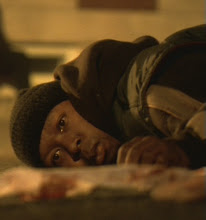The mainstay of treatment is wide local excision for SCC and BCC with adequate margins. Radiation is an acceptable alternative for non-surgical candidates or tumors in locations where post-operative cosmesis is an issue (primarily ear, nose, lip). Topical treatments are also alternatives, but local control rates are inferior to surgery and radiation.
Indications for post-operative XRT in BCC or SCC are:
- Perineural invasion
- Positive margins (not amenable to surgery)
- +LNs or +ECE
- > T3 (cartilage, bone invasion)
- Recurrent disease
- T1: 95%
- T2: 80%
- T3: 55%
Surgery
Wide local excision and Moh's microsurgery are good options for surgical resection. Adequate margins are required for good local control. BCC requires margins of 4 mm. SCC margins should be 5 mm.
XRT:
Primary radiation is an appropriate alternative to surgery. Local control rates are comparable, but may be slightly inferior (around 98 vs 95%). This is likely because in retrospective studies these were non-resectable tumors or larger tumors compared to surgical series.
A standard dose is 50 Gy in 20 fractions. If the tumor is large or there are concerns for cosmesis you can use 66 Gy in 33 fractions. A less protracted regimen could be 45Gy in 15 or 35 in 5 fractions.
Adjuvant Radiation is indicated in the post-operative setting when there is positive LN involvement or extracapsular extension and perineural invasion. Additionally, in instances where there is bony or muscle invasion or recurrent disease, adjuvant treatment can be added.
Planning Issues:
Primary lesions can be treated with either orthovoltage or electrons. Availability of both allows more treatment options when it comes to difficult locations in the head and neck area. Familiarity with the dosimetry for both is vital for picking the appropriate treatment modality.
Volumes for Electrons:
GTV = gross tumor volume
CTV = 0.5 - 1 cm around GTV
PTV = 0.5 cm
Penumbra = 1 cm
Basically you need a 1 cm penumbra to account for isodose constriction at depth.
Dose is usually prescribe to 90% isodose at depth
When picking an electron energy make sure you cover a few milimetres below the tumor depth.
Don't forget to account for a bolus to bring up the skin dose, particularly for lower MeV electrons.
Don't forget to use wax covered (to minimize back scatter) shield for underlying structures (eyes, lips, mastoid, etc.).
Electron rules of thumb:
Energy/2 = Depth of Rp dose
Energy/3 = Depth of 80% isodose
Energy/4 = Depth of 90% isodose
(Energy/2) + 1 = Thickness for lead shield
(Energy/2) = Thickness for cerrobend shield
Volumes for Orthovoltage:
GTV = gross tumor volume
CTV = 0.5 - 1 cm around GTV
PTV = 0.3 cm
Penumbra = 0.2 cm
Prescribe dose to surface for orthovoltage.
PTV can be smaller because collimation is almost at skin surface.
Penumbra can be smaller because there is no constriction of isodoses at depth.
F-factor is 1 for cartilage, but 4-5 for bone. Dose delivered to bone is higher. F-factor is less of an issure for higher energy orthovoltage beams.
120 kVp will give 100% at surface, and decreases by 10% every 0.5 cm
1 mm shielding is adequate for 120 kVp
240 kVp gives 100% at surface, and decreases by 10% every 1 cm
2 mm shielding is adequate for 240 kVp

No comments:
Post a Comment